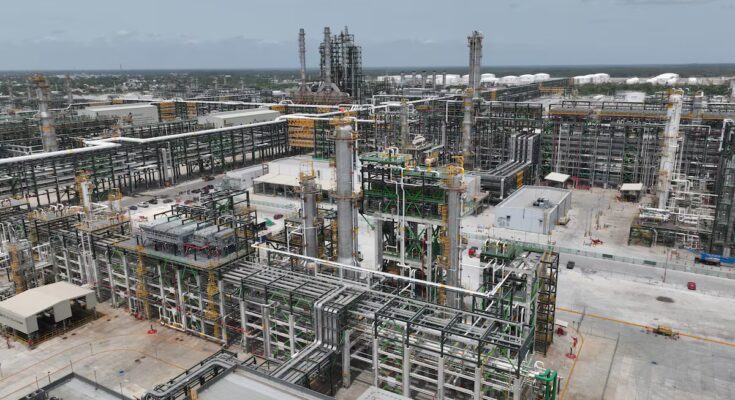Mexico’s Ministry of Energy (Sener) has outlined its fuel price scenario for the coming years, warning of a substantial increase in hydrocarbons used in electricity generation, representing a trickle-down transfer onto bills paid by users. Among the increases, the forecast for the price of natural gas stands out, which is important given the country’s very high dependence on imports to keep the lights on.
In his Electricity Sector Development Plan 2025-2039 published in October in the Official Journal of the Federation (DOF), Sener announced that natural gas could go from three dollars per million British thermal units (MMBtu) to eight dollars, this being the worst case scenario. The average forecast places the price at around $6.50 per MMBtu. “In the best case scenario, these scenarios in which the price rises a little more than double are not taken into consideration. But the global trend is that the price continues to increase and not only due to the sector’s own development, high consumption and demand, but also due to other environmental and geopolitical pressures, such as those we observe on the tariff front,” explains Guillermo Gómez, technical director of the Mexican Association of Vehicular Natural Gas, Methane, LNG and Biogas. (AMGNV) and director of the sustainable consultancy G2H.
That is, with that maximum price, the Government could easily anticipate a scenario of bad weather, natural events or even the entry into force of the tariffs proposed by the Donald Trump administration on hydrocarbon imports, the application of which has been postponed again to the end of October. In another reflection of the uncertainty generated by trade discussions, Mexico would also hedge forecasts of possible changes in the terms of tax exemptions for energy trading between Mexico, the United States and Canada under the USMCA, which is scheduled for revision in 2026.
According to this year’s data from the Mexican Natural Gas Association (AMGN), more than 70% of the gas consumed in the country is imported, mainly from the United States, in a context of sustained decline in domestic production and increase in consumption. Demand for natural gas in Mexico’s national pipeline network has seen growth of more than 50% in 14 years, the Secretariat added. The plan also highlights that, between 2013 and 2024, the electricity sector was the largest consumer of natural gas within the National Electricity System (SEN).
The U.S. Energy Information Administration (EIA) maintains a slightly more optimistic forecast, although also bullish. An average price of four dollars per MMBtu is expected in 2026, 16% higher than in 2025.
In other episodes of high prices caused by weather events – affecting cold or heat – the state Federal Electricity Commission (CFE) has absorbed the cost of Texas’ most expensive gas to avoid passing it on to rates, especially residential ones. However, these efforts often impact efficiency. “It is observed that the largest percentage increases are in natural gas, fuel oil and diesel, which will impact the operation and expansion of the SEN,” Sener added in his 2029 program.
Energy transition
In the background, concern over gas prices reflects the fact that the country’s energy matrix is poorly diversified, resulting in expensive electricity, disrupted supply and bottlenecks for large consumers, such as industrial nodes. Last year the medium and large industrial sector accounted for 60.6% of final consumption, despite comprising only 0.9% of users. In contrast, the residential sector hosted 89.2% of users, but used only 27% of the energy.
President Claudia Sheinbaum, an environmental scientist by training, shares the vision of experts who see renewable energies, such as solar and wind, as the way to alleviate and possibly overcome dependence on hydrocarbons. The gas industry also highlights that local gas production and storage, key to cushioning shocks in the price of imported fuel, has been behind schedule for years. Although natural gas is a hydrocarbon that generates greenhouse gases that accelerate climate warming, it emits about half as much carbon dioxide (CO2) as the same amount of coal.
In 2024, according to official data, 352,305 gigawatt hours (GWh) of electricity were generated and fed into the SEN, 29.8% more than in 2010 and 1.7% more than in 2023. Of this electricity, 76.6% came from conventional technologies (mainly gas combustion, followed by coal, fuel oil or diesel) and 23.4% from clean technologies. All things considered, generation from renewable sources has seen a 50% increase compared to 2010, but it is still limited and will require huge investments from the private and public sectors over a period of at least 15 years to continue growing.
“It is not only about promoting the diversification of the energy matrix with solar, wind and bioenergy projects, but also about something that has not been touched – at least not in depth – in the plan: the storage of natural gas which would help us manage those high peaks in demand that represent the increase in costs,” adds Gómez.
The Secretariat adds that since 2015 “there has been no significant change in the duration of the systems managed and operated by CENAGAS”, the center responsible for managing the National Integrated Natural Gas Transport and Storage System (SISTRANGAS). However, he listed a handful of designs and interconnections to optimize the system’s capacity and redundancy.



